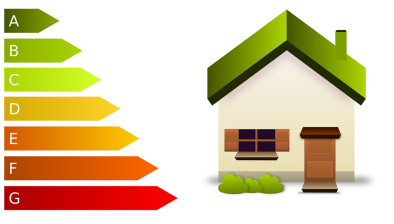New rating system among proposed changes to Energy Performance Certificates

The Scottish Government has proposed changes to Energy Performance Certificates (EPC) which it said will give consumers a clearer picture of their home’s energy performance and link better with the drive to cut emissions from homes and buildings.
Changes proposed include the introduction of a new rating system which will give clearer information on the fabric energy efficiency of a property; the emissions, efficiency and running costs of its heating system; and the cost of energy to run the home.
The EPC format will also be redesigned to make it easier to understand, and the validity of EPCs will be reduced from ten to five years to ensure consumers have more up-to-date information.
Subject to parliamentary approval, the new regulations, new EPC rating system and redesigned certificates are expected to be brought into force in 2026.
Proposed changes include:
- a new EPC rating system for domestic buildings, which will give clearer information on the fabric energy efficiency of a property; the emissions, efficiency and running costs of its heating system; and the cost of energy to run the home to standardised conditions;
- a new EPC rating system for non-domestic buildings;
- a redesigned EPC certificate, based on a first phase of user testing, and to be followed by a second phase prior to regulations coming into force;
- reduction of the validity period of EPCs from 10 to five years to ensure consumers have more up-to-date information;
- development of a new dynamic EPC user interface to sit alongside the published EPC;
- introduction of strengthened operational governance arrangements for EPC assessors and Approved Organisations to enhance quality assurance for consumers;
- establishing a new technical infrastructure to replace the current Standard Assessment Procedure (SAP) with the new UK Home Energy Model (HEM) calculation methodology, together with a new EPC Register, where we will share significant parts with the UK Government;
Alasdair Allan, acting minister for climate action, said: “Energy Performance Certificates are a vital source of information for home and building owners and potential purchasers. By improving the EPC we can give everyone a clearer picture of the actual energy efficiency of a home.
“These improvements reflect feedback from external groups including consumer organisations and the Climate Change Committee, as well as from industry, and are in line with changes to EPCs being implemented elsewhere in the UK and in Europe.”
A previous consultation considered proposals to reform EPCs so that they better support Scotland’s journey to net zero.
A technical consultation will follow on the level of EPC lodgement fees to support new, critical technical infrastructure. This will also give stakeholders a further opportunity to contribute to the development of the new regulations.
EPCs in Scotland remain a source of information only, unlike in other parts of the UK where they are linked to minimum energy efficiency standards.
Stuart Fairlie, managing director of Elmhurst Energy, an accreditation and training provider for energy assessment professionals, said: “It’s absolutely right that the new Scottish EPC is adopting differing metrics for domestic and non-domestic EPCs.
“For a long time, the EPC has been pushed, pulled and stretched into telling us information about a building’s energy performance that it simply wasn’t designed for. The new metrics will give building owners a greater understanding of a property’s energy efficiency performance, its carbon impact, and potential improvement options.
“We are also pleased to see the validity period of EPCs reduced from 10 years to five. This change will increase the relevance of the EPC and will support its alignment with evolving energy standards. Elmhurst would, however, advocate to reduce this further in the future in order to provide a more current and accurate picture of the energy performance of Scotland’s building stock.”
Calum Mackenzie, ESG consultant at Hollis, added: “Scotland’s EPC changes are a positive step for assessment of its non-domestic buildings. Perhaps the most influential change is the move to calculated ratings based on a reference building similar to the rest of the UK.
“Increasing the scope of metrics from CO2 emissions and energy to a broader set of measures can only improve the usefulness of the non-domestic EPC. As well as a direct emissions metric, it will now include an energy efficiency rating using comparative modelled emissions based on a reference building similar to the system in the rest of the UK, as well as energy demand.
“Previously, those used to the English system would have looked at buildings in Scotland with an EPC D rating and assumed it was a poorly performing building, but this wasn’t necessarily the case. This change should make clearer the progress Scotland is making in its EPC improvement work by allowing for more intuitive comparison between buildings of different use classes.”






















